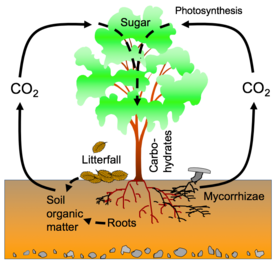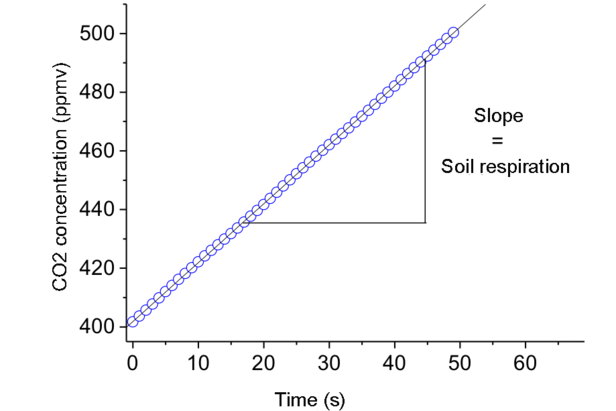Soil respiration, i.e. the CO2 flux from the soil, is the largest CO2 flux in ecosystems besides photosynthesis. Globally, soil releases about 10 times more CO2 than fossil fuel combustion. Therefore, if soil respiration changes, this can significantly affect the CO2 balance of forests and their climate impact.
Soil respiration consists of two components: (1) on the one hand, leaf litter, dead roots and soil humus are broken down by microorganisms, thereby releasing CO2. (2) On the other hand, «root respiration» produces CO2 during metabolic activity in the rhizosphere.
Experimental set-up and measuring principle
- Climate experiment: under a transparent roof, the soil is periodically dried out and heated with cables.
- Measurement of soil respiration: a chamber is placed on the soil surface and the increase in CO2 concentration is monitored by an infrared gas analyser.
Results ¶
Temperature and water availability are the most important direct factors that control soil respiration. In the long term, soil respiration also depends on the productivity of the plants that transfer their carbon to the soil.


